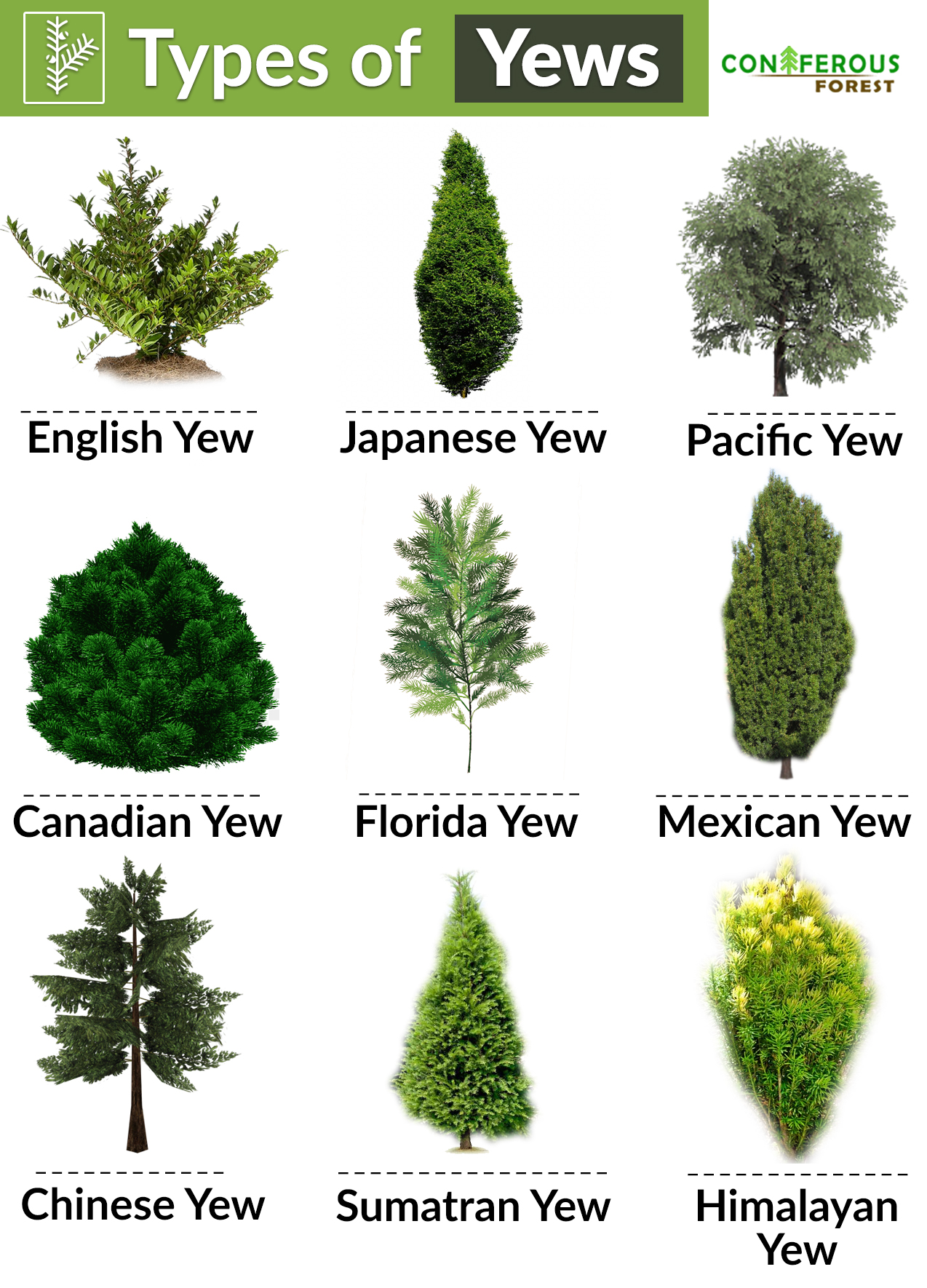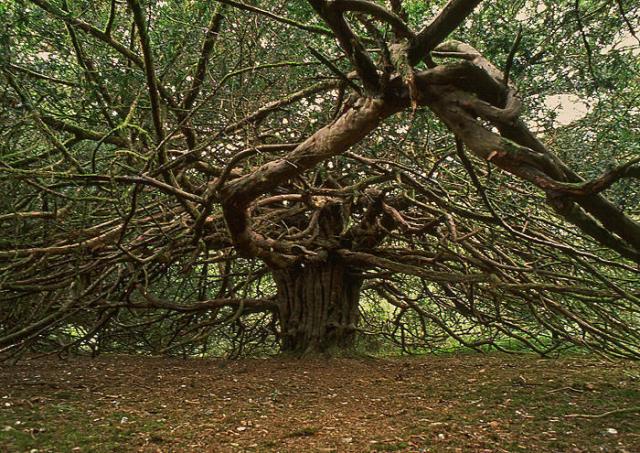|
Yew Trees: Resilient Evergreens with Unique Features and Ecological Significance Step into an ancient woodland where the timeless Yew Tree stands guard, its gnarled branches reaching toward the heavens. Revered for its longevity and resilience, the Yew Tree has quietly shaped ecosystems and cultures for centuries. From its rich history in sacred sites to its medicinal properties, this evergreen holds a special place in both nature and human legacy. The Yew Tree is a slow-growing evergreen conifer known for its enduring strength and cultural significance. Found across temperate regions, from the mountains of Europe to the Pacific coasts of North America, the Yew thrives in moist, well-drained soils and shaded environments. Its distinctive dark green needles and red berry-like arils have made it a symbol of resilience, while its wood, famously strong and flexible, has been prized throughout history for crafting everything from longbows to furniture. However, the Yew is not without its challenges—many species face population declines, and threats like disease and habitat loss continue to jeopardize its survival.
Types of Yews Yew is any of the slow-growing, long-lived coniferous shrubs or trees classified in the family Taxaceae. These small conifers are found across the temperate and tropical mountainous forests of the northern hemisphere. Several of the yew tree species are typically used in landscaping as ornamental trees because of their high resistance to urban pollution. Scientific ClassificationKingdom Plantae Clade Tracheophytes Division Pinophyta Class Pinopsida Order Pinales Family Taxaceae List of Different Types of Yew Trees The name yew is typically given to coniferous trees belonging to the families Cephalotaxaceae and Taxaceae. Although Cephalotaxaceae is a separate group of conifers containing three genera, many botanists unite and include these genera in the Taxaceae family. It includes six extant genera and roughly 40 species of plants, out of which the Taxus genus is commonly categorized into the following species: The other existing genera under the Taxaceae family include Amentotaxus, Austrotaxus, Cephalotaxus, Pseudotaxus, and Torreya. Here are some of the different yew species categorized under these genera: Assam catkin yew (Amentotaxus assamica) Taiwan catkin yew (Amentotaxus formosana) Poilane’s catkin yew (Amentotaxus poilanei) Yunnan catkin yew (Amentotaxus yunnanensis) New Caledonia or southern yew (Austrotaxus spicata) Griffith’s plum yew (Cephalotaxus griffithii) Oliver’s plum yew (Cephalotaxus oliveri) Chinese plum yew (Cephalotaxus sinensis) Korean plum yew (Cephalotaxus koreana) Gongshan plum yew (Cephalotaxus lanceolata) Whiteberry yew (Pseudotaxus chienii) Farges nutmeg tree (Torreya fargesii) Chinese nutmeg yew (Torreya grandis) Japanese torreya (Torreya nucifera) Florida torreya (Torreya taxifolia) Some hybrid yews have been reported, including Taxus x media and Taxus x hunnewelliana produced by hybridization of Taxus cuspidata with Taxus baccata and Taxus canadensis, respectively. Cultivars included are Hicks yew or Anglojap yew, Pacific yew cv erecta, Pacific yew cv nana, Pacific yew cv nutallii, Japanese yew cv dwarf bright gold, and English yew cv fastigiata.
Yew Tree Quick InformationTree Type Evergreen coniferous Identification Height: 8-65 ft, some can be 130 ft high Leaves: Flat, dark-green, lanceolate, arranged in spiral form, 10-40 mm long Trunk Diameter: Usually 5-6.5ft, some may have a thickness of about 16 ft Bark: Thin, purple-brown or red, smooth, gradually becomes scaly or fibrous Female Cones: Highly modified, produces one seed Seeds: 4-7 mm long, surrounded by a red berry-like aril, 8-15 mm long Branches: Alternate, smooth, remains green during the first two years Crown: Dense, pyramidal, becomes irregular with age Pollen cones: Globular, 3-6 mm wide Distribution Most of Europe and Asia, northwest Africa, North and Central Americas Habitat Near sea level in moist temperate forests, at an elevation of about 2500-3000 m in tropical regions USDA Hardiness Zone 4-9, depending on the species Growth Rate Slow to average, about 20-40 cm per year Lifespan Long-lived, over 1000 years; the oldest tree in Europe, the Fortingall Yew, is more than 2000 years old Growing Conditions Sunlight: Tolerates full sun, full shade, and partial shade Soil: Moist, well-drained, with organic matter Water: Frequent watering in the first year after it is planted Drought Tolerance Moderate Diseases & Pests Mostly resistant to pests and diseases; very few insects such as mites and yew scale attack the needles, phytophthora fungus species may cause root and crown rot Reproductive System Dioecious, occasionally change sex with age and can be monoecious Propagation Through stem cuttings Care Prune yews in winter or early spring to control their size Wildlife Value Birds like waxwings and thrushes eat arils that contain seeds Uses As an ornamental plant, source of Taxol or paclitaxel, production of drug eluting stent IUCN Conservation Status The population of most species, including Taiwan, Himalayan, and Pacific yew is decreasing, while that of Common yew is increasing Increasing FactsSummary The Yew Tree is not just an evergreen—it’s an ecological keystone and a historical icon. Its berries, while toxic to humans, offer sustenance to birds like waxwings, while its dense foliage provides shelter for a range of species. The Yew is also invaluable in human history, from being planted in sacred churchyards to its use in medicine, as a source of the cancer-fighting compound Taxol. Despite its many uses, the Yew faces conservation challenges, particularly in populations like the Pacific Yew and Himalayan Yew, which are seeing declines. Understanding and protecting the Yew Tree is critical to preserving both its ecological role and its rich legacy for future generations. References https://www.conifers.org/ta/Taxus.php https://conifersociety.org/conifers/taxus/ https://www.iucnredlist.org/species/42546/95808896 https://homeguides.sfgate.com/yew-varieties-76332.html (责任编辑:) |


